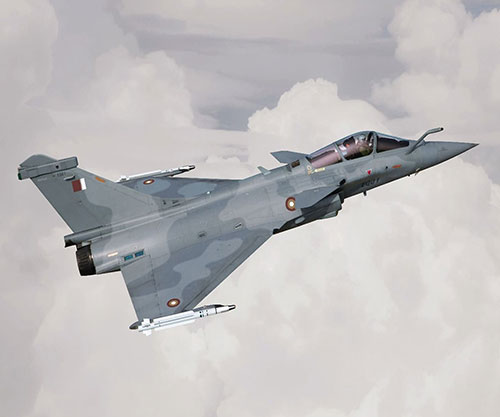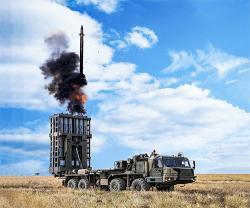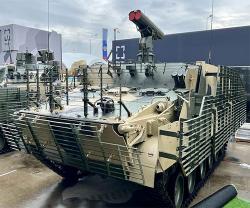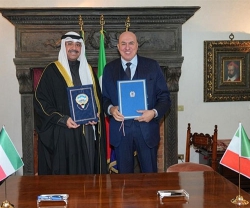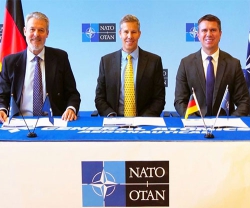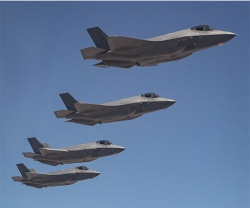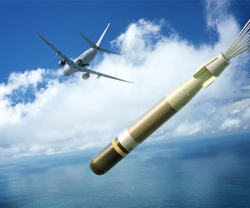International transfers of major arms saw a slight drop between 2012-16 and 2017-21 (-4.6%). Nevertheless, exports by the United States and France increased substantially, as did imports to states in Europe (+19%), East Asia (+20%) and Oceania (+59%). Transfers to the Middle East remained high, while those to Africa and the Americas decreased, according to new data on global arms transfers published this week by the Stockholm International Peace Research Institute (SIPRI).
SIPRI’s data reflects the volume of deliveries of arms, not the financial value of the deals. As the volume of deliveries can fluctuate significantly year-on-year, SIPRI presents data for five-year periods, giving a more stable measure of trends:
- The biggest growth in arms imports among world regions occurred in Europe. In 2017-21 imports of major arms by European states were 19% higher than in 2012-16 and accounted for 13% of global arms transfers. The largest arms importers in Europe were the United Kingdom, Norway and the Netherlands. Other European states are also expected to increase their arms imports significantly over the coming decade, having recently placed large orders for major arms, in particular combat aircraft from the USA. Despite armed conflict in eastern Ukraine throughout 2017-21, the country’s imports of major arms in the period were very limited.
- Asia and Oceania remained the largest importing region for major arms, receiving 43 per cent of global transfers in 2017-21, and six states in the region were among the 10 largest importers globally: India, Australia, China, South Korea, Pakistan and Japan. Transfers to the region overall fell slightly (-4.7%), but there was wide variation among different subregions.
- Arms imports to South Asia fell by 21% and those to South East Asia fell by 24% between 2012-16 and 2017-21. In the same period, arms imports to Oceania grew by 59%, due to a 62% increase in Australia’s imports, and imports to East Asia rose by 20%.
- Indian arms imports decreased by 21% between 2012-16 and 2017-21. However, it remained the largest importer globally and India is planning large-scale arms imports in the next few years from several suppliers.
- Middle Eastern states imported 2.8% more arms in 2017-21 than they did in 2012-16. This followed an 86% increase in arms imports to the region between 2007-11 and 2012-16.
- As the conflict in Yemen continued and tensions between Iran and other states in the region remained high, arms imports played an important role in security developments in the Gulf. Arms imports by Saudi Arabia - the world’s second largest arms importer - increased by 27% between 2012–16 and 2017–21. Qatar’s arms imports grew by 227%, propelling it from the 22nd largest arms importer to the 6th largest. In contrast, arms imports by the United Arab Emirates (UAE) shrank by 41% between 2012-16 and 2017-21, taking it from the third largest to the ninth largest arms importer globally. All three of these states and Kuwait have placed large orders for major arms planned for delivery in the coming years.
- Arms exports by the USA grew by 14% between 2012-16 and 2017-21, increasing its global share from 32% to 39%. Arms exports by the USA in 2017-21 were more than double (108% more) those of the second largest exporter, Russia. The Middle East accounted for 43% of US arms transfers. Especially important for the growth of US arms exports was an increase in deliveries of major arms to Saudi Arabia, by 106%.
- Russia, which accounted for 19% of all exports of major arms in 2017-21, saw its exports shrink by 26% between 2012-16 and 2017-21. The overall decrease in Russia’s arms exports was almost entirely due to a fall in arms deliveries to two recipients: India and Vietnam. However, several large arms deliveries from Russia to India are expected in the coming years.
- France accounted for 11% of global arms exports in 2017-21, making it the third largest arms exporter. France increased its arms exports by 59% between 2012-16 and 2017-21.
- In 2017-21 China was the fourth largest arms exporter and Germany the fifth largest. Arms exports by China decreased by 31% between 2012-16 and 2017-21, while Germany’s arms exports fell by 19%.
- Italian arms exports represented 3.1% of the global total in 2017-21 and were 16% higher than in 2012-16.
- Arms exports by the United Kingdom dropped by 41% between 2012-16 and 2017-21. The UK accounted for 2.9% of total arms exports in 2017-21.
- Between 2012-16 and 2017-21 there were overall decreases in arms imports by states in three world regions: the Americas (-36%), Africa (-34%), and Asia and Oceania (-4.7%).
- In 2017-21 arms imports by South American states were lower than in any five-year period in the past half century. Brazil is the only state in South America with substantial deliveries of arms pending.
- Myanmar’s arms imports fell by 32% between 2012-16 and 2017-21. It accounted for 0.6% of global arms transfers in 2017-21.
- In 2017-21 the five largest arms importers in sub-Saharan Africa were Angola, Nigeria, Ethiopia, Mali and Botswana.
- Taiwan’s arms imports shrank by 68% between 2012-16 and 2017-21, but are scheduled to increase significantly in the coming years.
- Israeli arms imports increased by 19% between 2012-16 and 2017-21.
- Egypt’s arms imports grew by 73% between 2012-16 and 2017-21, making it the third largest arms importer globally.

